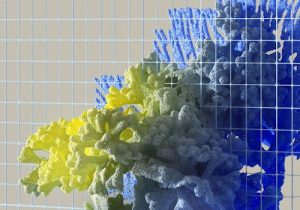DNA Data Storage: Preserving Digital Legacy in Genetic Code
The digital age has brought about an explosion of data, with an estimated 2.5 quintillion bytes of data being created every day. With the sheer volume of information being produced, it’s no surprise that we are finding new, innovative ways to store it. One such method is DNA data storage, where digital information is stored in genetic code. This emerging technology not only offers a massive increase in storage capacity, but it also provides a solution for preserving our digital legacy for future generations. In this article, we will delve into the world of DNA data storage and explore how it is shaping the future of data preservation.
What is DNA Data Storage?
The Basics
DNA (Deoxyribonucleic acid) is the genetic code that carries the instructions for every living organism’s development and functioning. It is composed of four nucleotides – adenine (A), guanine (G), cytosine (C), and thymine (T). These building blocks form long sequences that make up our genetic code. Each person’s unique DNA is made up of about 3 billion base pairs.
DNA data storage is the process of encoding digital information into DNA molecules for long-term storage. Unlike traditional storage methods, such as hard drives or cloud storage, DNA has the potential to store data for centuries without the risk of data corruption or degradation.
The Science Behind It
To store data in DNA, the information is first converted into binary code (1s and 0s) and then translated into the four letters of DNA – A, G, C, and T. This is done by assigning each binary code to a specific combination of nucleotides. For example, A is represented by 00, G by 01, C by 10, and T by 11. This process is known as DNA synthesis.
Once the data is converted into DNA, it is stored in tiny glass beads called “nanoparticles.” This further ensures the long-term stability of the data as DNA is resistant to high temperatures, humidity, and various chemicals.
The Advantages of DNA Data Storage
Infinite Storage Capacity
Your DNA is capable of storing massive amounts of data. Just one gram of DNA can potentially hold up to a billion terabytes of information, enough to store all the world’s data.
Longevity
DNA has been around for billions of years, and if stored correctly, it can potentially last for centuries. This means that DNA data storage has the potential to preserve our digital legacy for future generations.
Data Security
Most traditional storage methods are vulnerable to data loss, theft, and cyberattacks. However, DNA data storage eliminates these risks as DNA is extremely difficult to hack or manipulate.
The Challenges
Cost
Currently, DNA data storage technology is still in its early stages and can be quite expensive. The cost of synthesizing DNA and the equipment needed for data retrieval can add up quickly.
Speed
Although DNA data storage offers immense potential for long-term storage, it is not the most efficient choice when it comes to accessing data. The process of encoding and decoding data into DNA is time-consuming and requires specialized equipment, making it slower than traditional storage methods.
The Future of DNA Data Storage
Despite its challenges, DNA data storage is gaining traction in the tech industry. In 2019, Microsoft announced a partnership with Twist Bioscience, a synthetic DNA manufacturer, to develop a commercial-scale DNA data storage system. This collaboration could potentially revolutionize the way we store and preserve data.
Another significant development in this field is the creation of the DNA Data Storage Alliance, a coalition of organizations and companies dedicated to advancing DNA data storage technologies.
Conclusion
DNA data storage offers a promising solution for the ever-growing need for storing and preserving digital information. Its ability to store massive amounts of data for extended periods has the potential to reshape the way we think about data storage. Though still in its early stages, the rapid advancement of this technology could make DNA data storage a reality in the near future. One thing is for sure – our digital legacy will be in good hands with this innovative technology.











